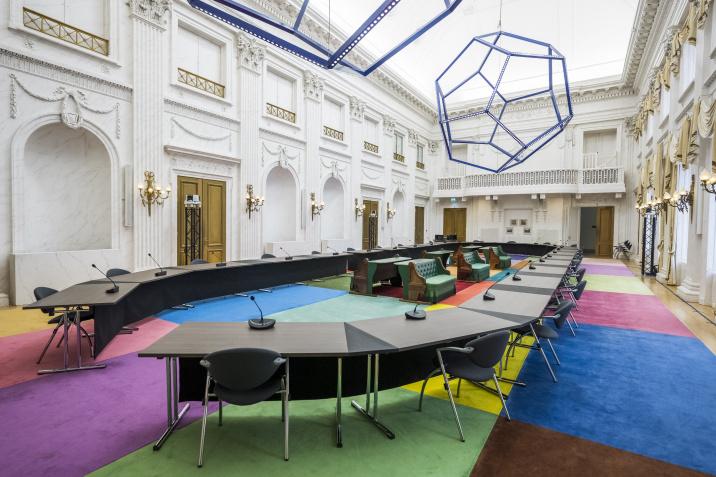House meets in Former Plenary Hall
The Former Plenary Hall has been temporarily reinstated as a meeting room. At this spot, which was the home of the plenary meetings of the House of Representatives until 1992, a round table discussion about the Corona app took place on Wednesday 22 April.

Ballroom
The Former Plenary Hall has a rich history. Stadholder Willem V had it built as a ballroom for the wedding of his daughter, Princess Louise, in 1790. The musicians performed from the sumptuously decorated balconies.
National Assembly
It was just six years later that the hall gained a new purpose, as the site of the first National Assembly of the Batavian Republic. The balconies now accommodated members of the public who came to watch.
The Dutch House of Representatives
At the beginning of the nineteenth century the hall was used for some time by Louis Bonaparte as a throne room, but in 1815 it was used for the first meeting of the newly elected House of Representatives, a purpose which would turn out to be rather more permanent. The Members of Parliament sat together on benches, and smoke often rose up from behind the thick green curtains where Members sat enjoying a cigar during informal discussions. On Princes Day it was where the monarch gave the speech for the state opening of Parliament, a tradition which continued until 1904, when this annual ritual was moved to the Ridderzaal.
Too small
For two centuries the hall was put to good use, but in the second half of the twentieth century the realisation grew that the hall was becoming too small, with three people per bench and very little room for the public. In 1992 the new building of the House of Representatives was opened, with its much larger Plenary Hall.
New look for the Former Plenary Hall
Since 1992 the hall is in use for internal and external meetings such as symposiums and conferences. The hall has been given a new look that combines the historic architecture with modern art. The large woollen carpet in thirty different colours represents the multicultural society of the Netherlands. Two enormous light installations hang from the ceiling. Both the carpet and the light installations were designed by Jan van den Dobbelsteen.